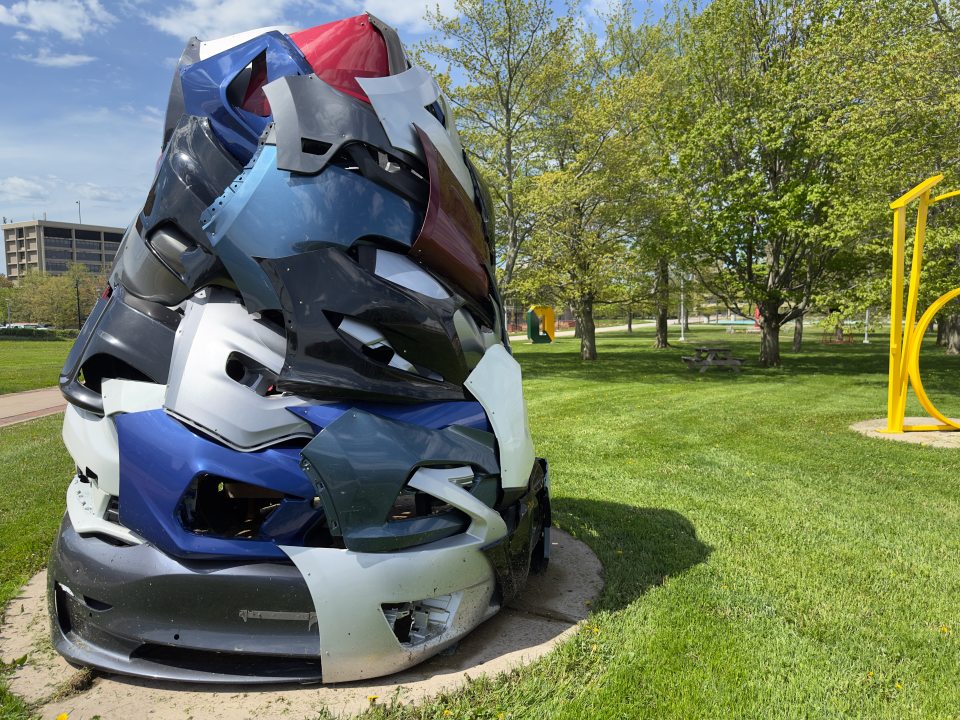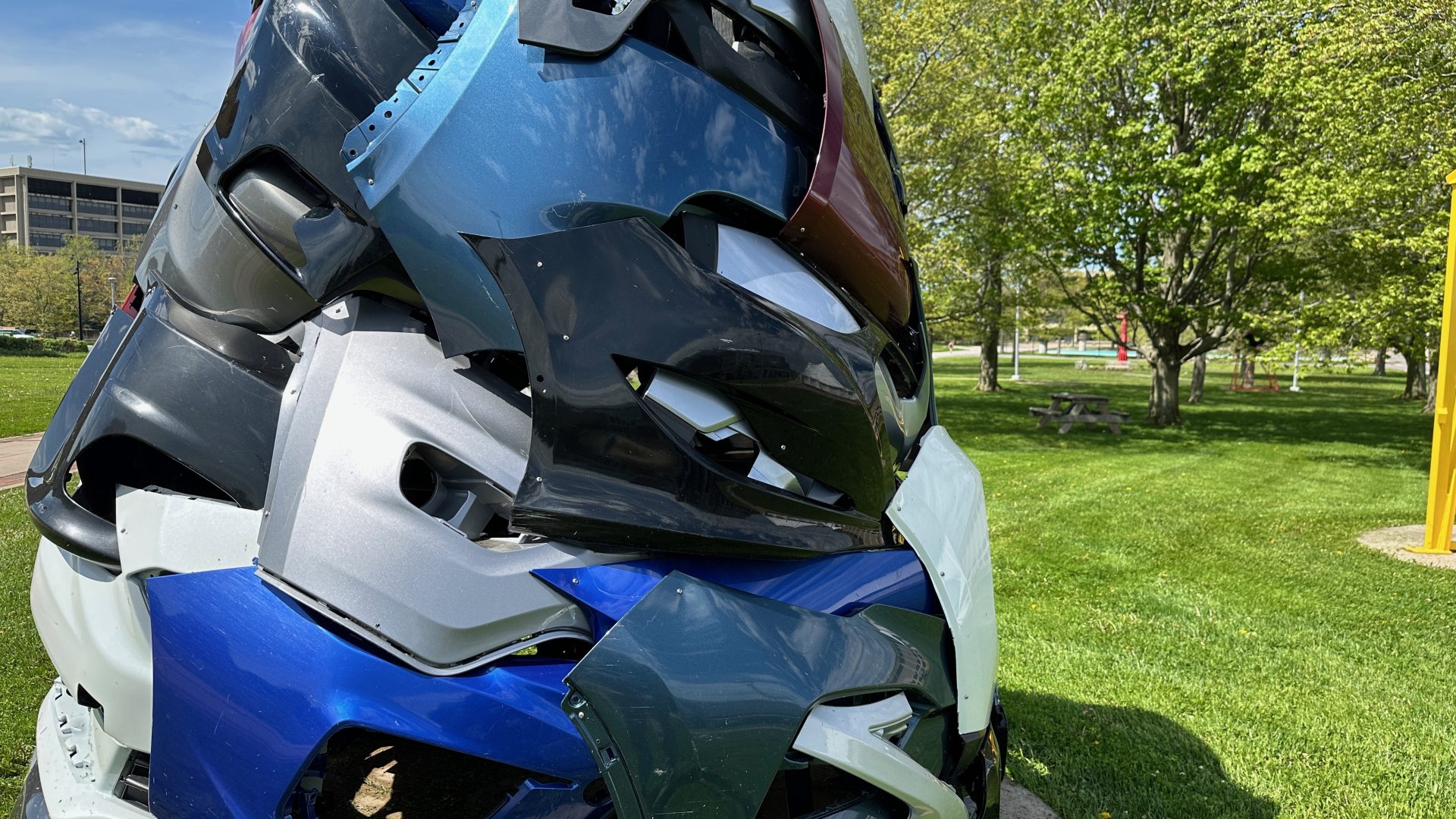
Tower, plastic car parts, 2024
Monica Franciscus
The industrial revolution is over. Ubiquitous robots, and IT have entered the workplace with resulting unemployment, poverty, and inequality. Extreme weather changes with large temperature fluctuations, heavy rains, fires, melting ice, rising sea levels, - are now the norm. Living in a country that prioritizes profit, and profits off of its people and the next generation (instead of investing in them, -their education and health), at the expense of the environment and people is perplexing. Considering only 20,000 feet high in Earth's atmosphere is breathable oxygen, into which we continuously add pollution is creating visible changes. The car industry knew about the dangers of emissions; they made sure trains were mostly done away with in the U.S. ensuring dependency on cars and oil. Excess is being produced and filling landfills or being dumped in the sea. Plastic comprises 18% of landfills and does not decompose. In 22 years, at the rate we are going, landfills in the U.S. will be at capacity. I used to be a figurative painter but given what is going on, I could not keep painting pretty pictures. I refuse to buy products to create more given the overproduction of goods. My art repurposes plastic car bumpers otherwise headed for landfills. These works are symbolic for being the biggest contributors to greenhouse gases, tire-wear particles, for consumerism, for corporations and the 1% collaborating with politicians prioritizing profit. The plastic sculptures are about sustainability, for how we navigate the world, the materials we choose to use, policies, and employment that serve everyone. Being on a college campus seems fitting as those students are the next generation, inheriting what previous generations leave behind, - that is a system that needs big changes. The public needs to question what corporations and politicians do. Nothing else matters much if the environment is uninhabitable and the majority lives substandard. Ten percent of the richest people on Earth contribute to 50% of emissions which has far more serious consequences on the poor around the world. My work aims to promote awareness, so we adjust how we think, live, shop and travel. Art represents the times. It's artists' responsibility to illustrate issues to get the conversation going for change.
